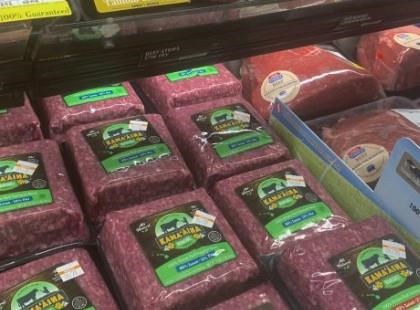December exports climbed 15% in volume with all major products growing in the final month of the year. But our analysts are watching headwinds on the horizon for 2023.
U.S. dairy exports finished what was an already stellar 2023 with gusto with export volume on a milk solids equivalent (MSE) basis up 15% (+24,098 MT MSE) for a total of 2.4 million MT MSE. In value terms, exports grew 21% in December (+$128 million) putting total 2022 value at over $9.6 billion – up 25% (+$1.9 billion).
Most all major export products grew in December, with cheese up 16% (+5,035 MT), NFDM/SMP up 8% (+4,675 MT), whey products up a combined 20% (+8,200 MT) and lactose up 30% (+8,849 MT). Of the major products, only butterfat (-4%, -202 MT) and fluid milk/cream (-4%, -462 MT) were down slightly in December.
Overall, December’s data reflected a continuation of the major trends we saw throughout the year: long-term investment by the U.S. dairy industry combined with available supplies and strong demand from the key U.S. markets drove exports to record heights. Just to give a sample of the numbers, U.S. exports to Mexico were up 23% (MSE) in December, raising year-end volume by 9%. Similarly, Japan was up 27% in December and 22% for the year; China grew 75% in December, 11% for the year; Korea rose 4% for December, 9% for the year; and the list goes on.
Overall, 2022 was undoubtedly an outstanding year for U.S. dairy exports, but can we expect the same in 2023? For this month’s report, we’ll reflect on the great year that was 2022 as well as what to expect this year for U.S. SMP, cheese and whey exports.

NFDM/SMP
Despite the strong finish to the year, total NFDM/SMP exports for 2022 were down 6% (-54,136 MT). Lack of production was the primary barrier to U.S. export growth as U.S. NFDM/SMP output fell 8% in 2022, limiting exportable supplies. Weaker global demand amid high prices challenged demand for much of 2022 and certainly didn’t help matters.
Looking to 2023, global supply and inventory management will be key drivers of trade. The high prices seen in 2022 that drove buyers out of the market are on the retreat with current SMP prices falling nearly 40% compared to a year ago. With lower prices, many key importers are rebuilding stocks, but the major question for SMP demand hinges on China, where imports have been extraordinarily weak in 2022. If China re-enters the market for SMP, we can expect prices – and exports – to react positively as global demand lifts.
Cheese
Conversely, available and affordable U.S. cheese drove exports to record heights in 2022, finishing just shy of one billion pounds exported (451,370 MT or 995 million lbs.), easily setting a new record. Global dynamics clearly favored the U.S. for much of 2022 with growing cheese production at home while competitors stagnated. At the same time, international customers sought to secure adequate cheese supplies for hungry consumers – especially in the United States’ top markets of Latin America, Korea and Japan.
Looking ahead, those favorable tailwinds are likely to dissipate. Competition from Europe is increasing as their milk production climbs, internal demand weakens, and prices collapse. Similarly, with China’s demand for ingredients remaining weak, New Zealand has increased its focus on cheese production and exports. Thankfully, international demand appears to be holding steady, but competition will abound for U.S. cheese exporters in 2023.
WPC80+
U.S. WPC80+ exports ran roughly flat in 2022, climbing just 222 MT (+0%), as strong domestic demand kept production here at home and high prices likely gave international buyers pause about introducing new products with protein concentrates. The U.S. did see a stronger gain in the WPC category under the HS code 0404.10 than the code we classify as WPC80+, but we believe 0404.10 WPC volume is WPC34, rather than the high proteins.
Turning to 2023, domestic purchasing is clearly running weaker to start the year while cheese (and therefore high protein whey) production is holding strong, suggesting an increase in exportable supplies. At the same time, lower WPC80 and WPI prices should encourage customers to look to build inventory as well as experiment with new products and new formulations that incorporate dairy protein. All signs signal WPC80+ export will grow in 2023.
Whey (0404.10)
U.S. low protein whey exports (exported under the HS code 0404.10) finished the year strong, with volume up 19% (+6,700 MT) in December. For the year, exports grew 10% (+52,974 MT) in 2022.
U.S. low-protein whey exports were bolstered by growing Chinese demand in the back half of 2022. After lagging in H1 2022 (-13%, -18,735 MT), U.S. exports to China took off in H2 (+45%, +50,196 MT) as dynamics within the Chinese pork industry drove demand for increased use of whey in hog feed.
Click here to see more...